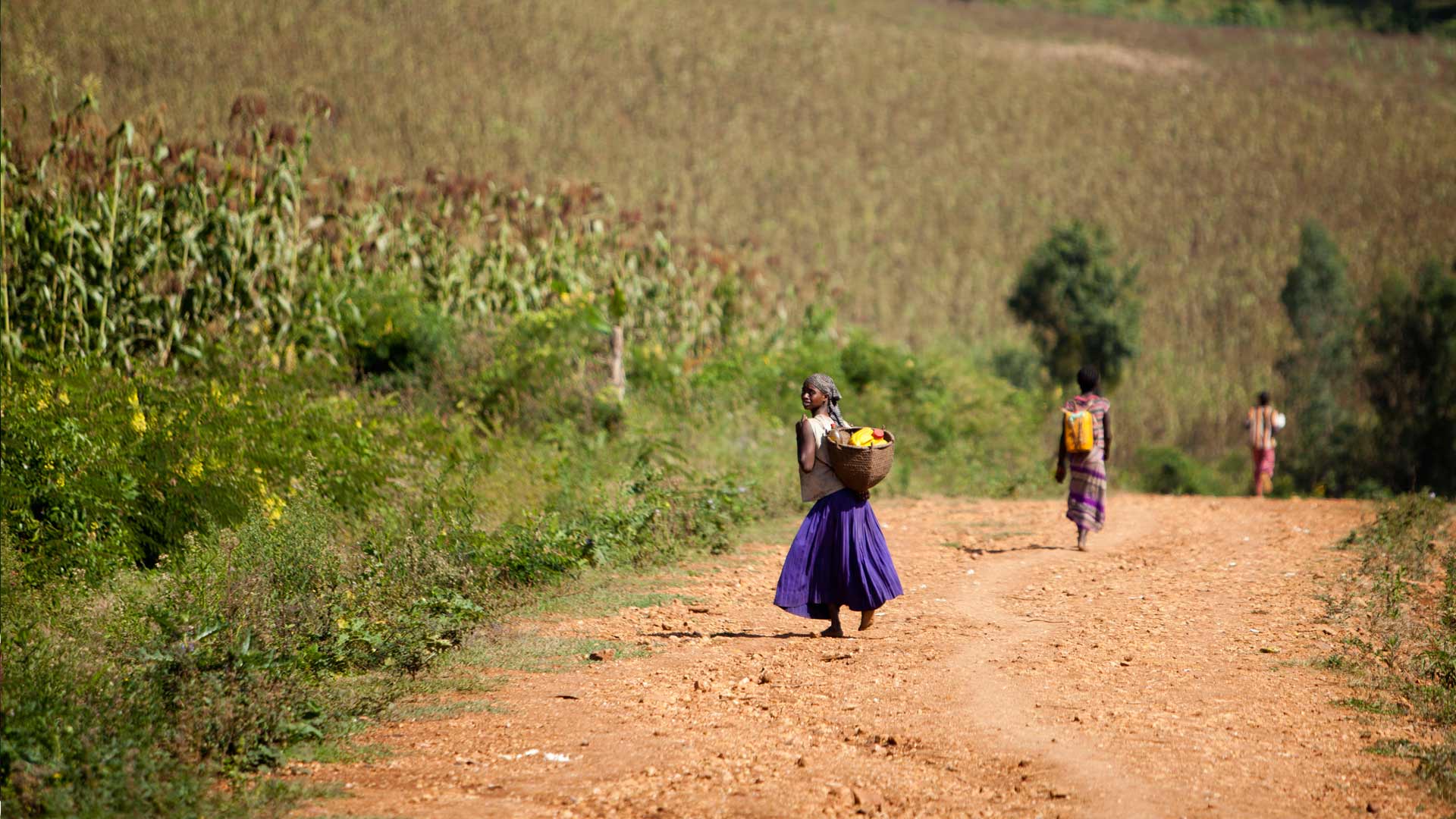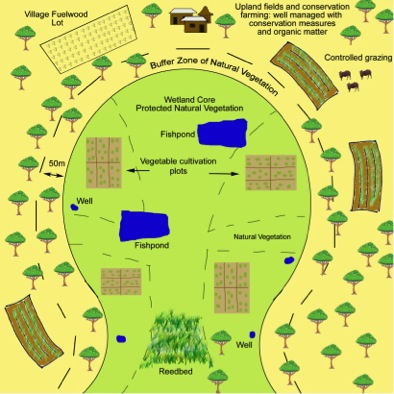
Centre for Sustainable and Resilient Communities (CSRC)
SWFLG’s Approach
SWFLG recognises that the landscape is a functional system with interlinked elements. We take a landscape approach, recognising all ecosystem components as the basis of development.
Functional Landscape Approach

Illustration credit: Alan Dixon
Development interventions need to recognise the linkages between different components in the landscape and the way they interact in ecological terms. These landscape components include catchments and valleys at the largest scale, fields and grazing land at the village scale. Their interactions must always be seen in terms of the way they impact on communities and their economies through the ecosystem services they provide. Hence a landscape approach is needed, combining analysis of the ecological, economic and societal elements across the terrain.
Key linkages in this approach are ecological functions, especially hydrological and geomorphic processes, market networks and information flows. Maintaining and developing these is crucial for sustaining and enhancing livelihoods.
Specific land management practices across a catchment and valley can help support sustainable and resilient development.
Hydrological Resource Management: a key ecosystem
A key ecosystem service in the functional landscape approach is the hydrological system. It should be maintained in as near a natural state as possible. This helps minimise peak flow floods in the rainy season, while river flows are maintained in the dry season.
Two contributions to this are a high level of infiltration of rainfall and a reduced runoff. These can enhance plant growth and reduce damaging floods, as well as develop the water storage capacity of the land and groundwater supply.

Photo: Beniot Rivard
Holistic Approach and Livelihoods
An holistic approach to development also recognises the socio-ecological nature of livelihoods; in other words, how societies interact with their environment.
Maintaining the functioning of the ecosystem services is the basis for sustainable societies and communities. Developing sustainable use regimes in societies and communities is the basis for maintaining those ecosystem services.
However, for sustainable use regimes to be accepted by societies and communities they must be able to produce economic benefits for the welfare of their people and be appropriate for those societies. This means that in developing a functional landscape approach social, cultural and livelihood considerations need to be integrated alongside ecological ones, creating a holistic, socio-ecological orientation.